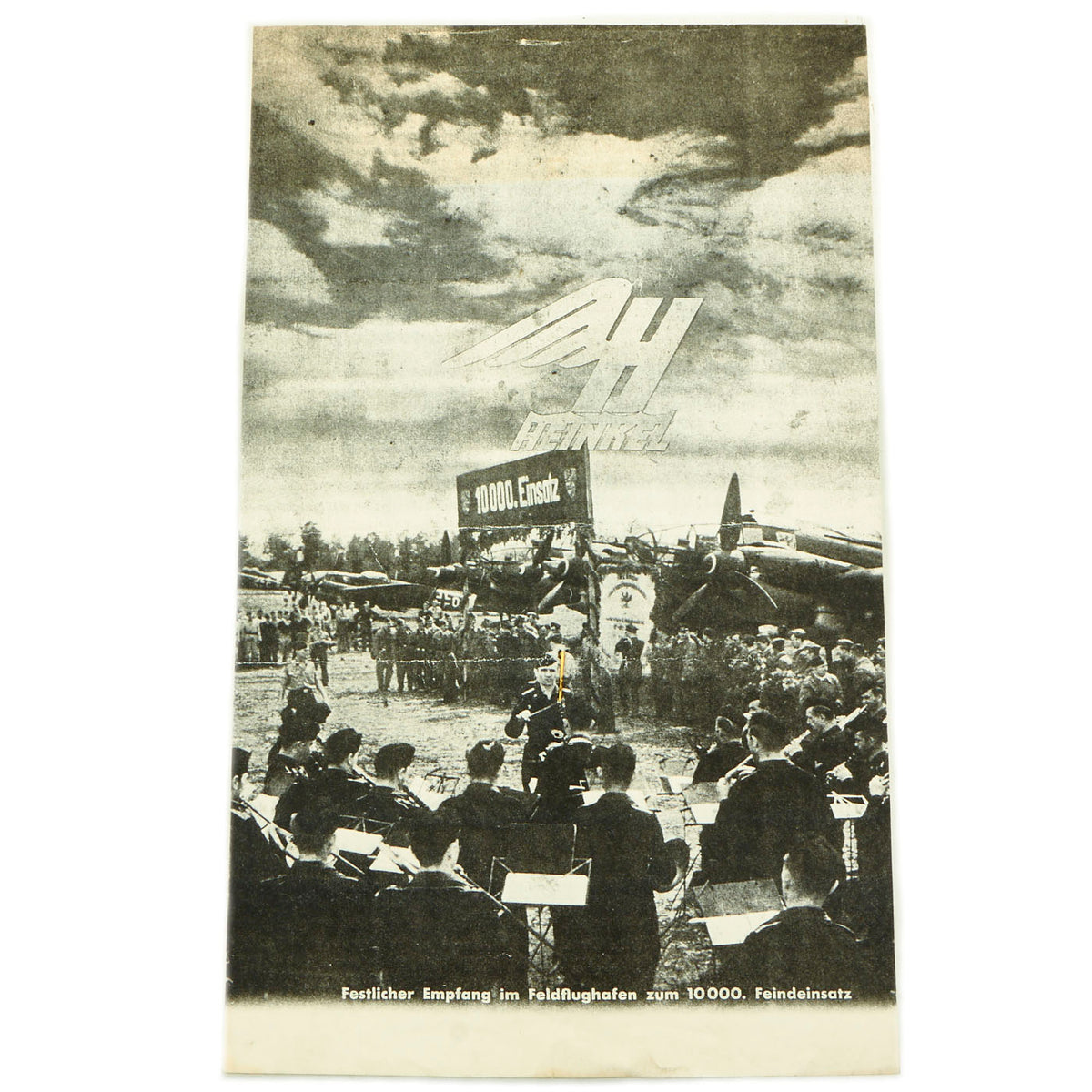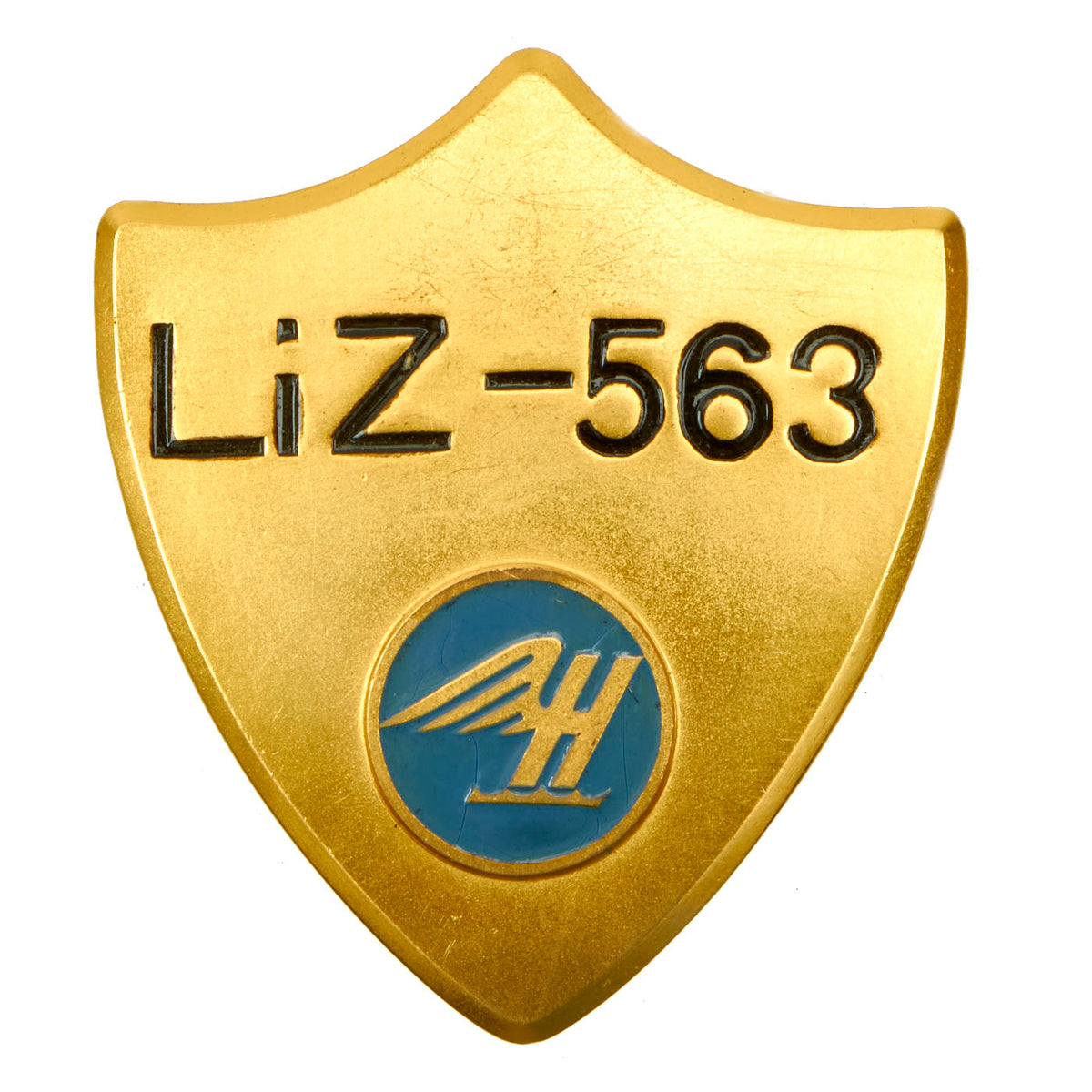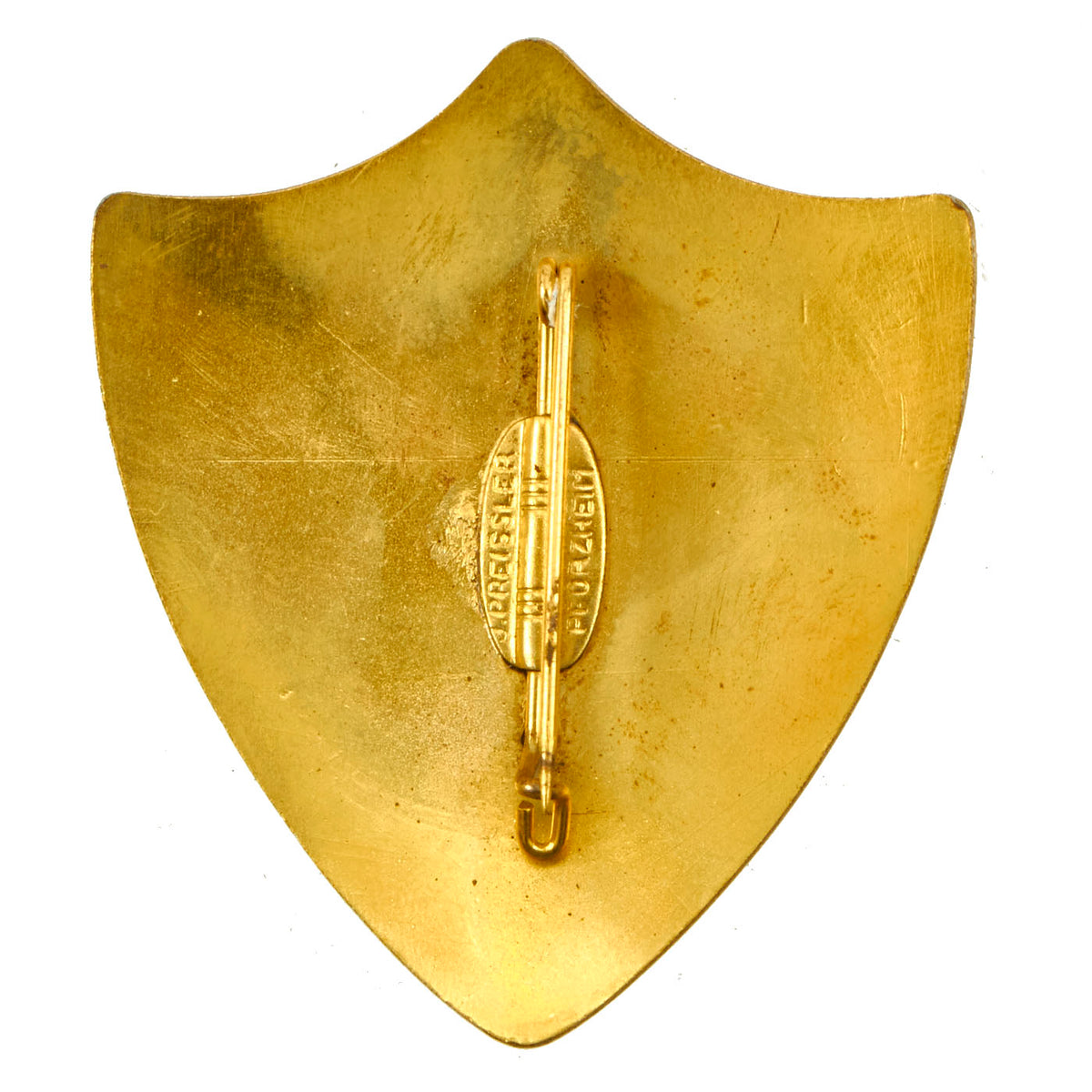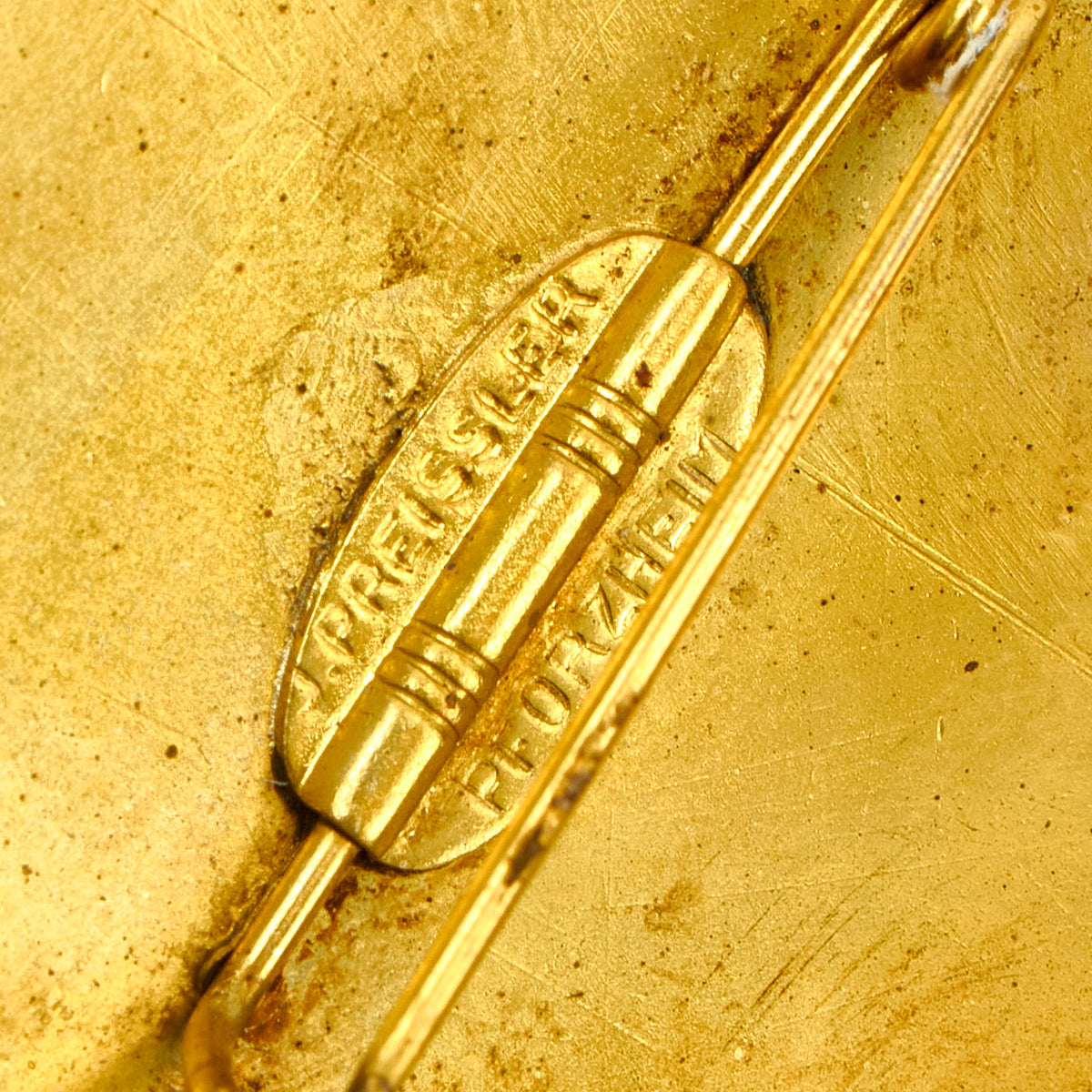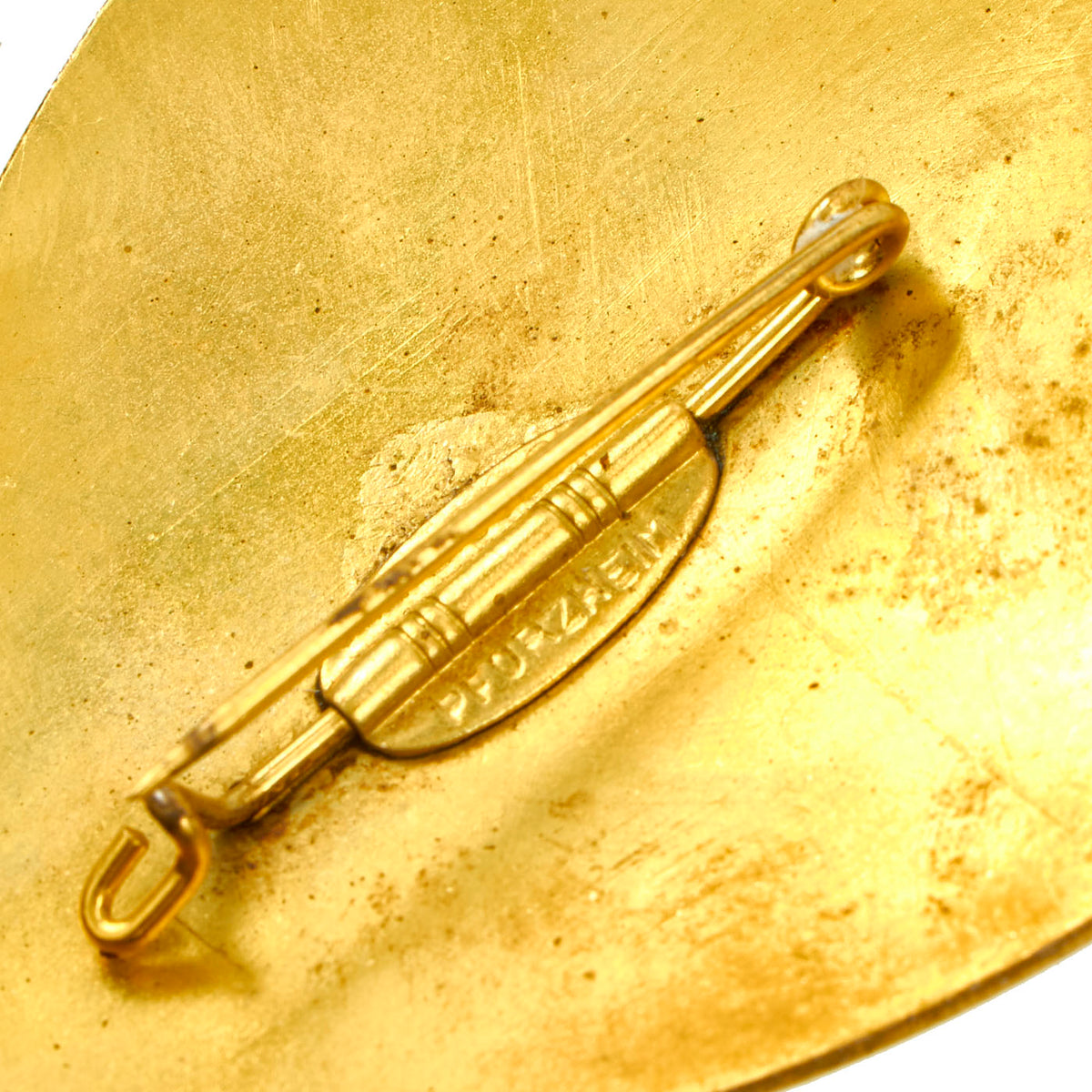Original German WWII Ernst Heinkel Aircraft Works Factory Worker’s Badge ID LiZ-563 – Badge By J. Preissler of Pforzheim Original Items
$ 150,00 $ 60,00
Original Item: Only One Available. Ernst Heinkel Flugzeugwerke GmbH (from 1943 Ernst Heinkel AG), Heinkel for short, was one of the largest German aircraft construction companies in the first half of the 20th century. Ernst Heinkel Flugzeugwerke held 1,352 patents in the field of aviation and 587 intellectual property rights in the engine area. Machines and licenses were sold to Denmark , Finland , Sweden , Hungary , the Soviet Union and Asia. The company designed civil and later military aircraft in particular. She brought Rostock, the final breakthrough in terms of industrialization in the first half of the 20th century. Rostock became a modern city and high-tech location. The number of employees rose from around 1,000 in 1932, also through the operation of other plants in Germany and in occupied Poland and Austria, to around 9,000 in mid-1939 and around 16,000 at the end of 1944.
This badge would have been used in conjunction with other forms of identification as well as proof of your employment to your assigned factory. During wartime, anything as vital and vulnerable as an aircraft factory wanted to keep track of its workers—and make sure that no saboteurs slipped in.
Not too many of these examples are seen that often and finding any information on them is rather difficult, making this an excellent research opportunity! The badge itself is in lovely condition and retains almost all of its original colors and finish, with little to no signs of wear or use. The reverse is a safety pin style attaching mechanism and is still in perfect working order. The maker information is stamped onto the tab that secures the pin to the shield.
The maker of this badge can be read as J. PREISSLER / PFORZHEIM. This firm is a well known manufacturer of many badges, tinnies and awards during WWII, including prestigious awards.
This is an incredible example of a near mint Heinkel factory workers badge! Comes more than ready for further research and display.
Heinkel
The Heinkel company is most closely associated with aircraft used by the Luftwaffe during World War II. This began with the adaptation of the He 70 and, in particular, the He 111, to be used as bombers. Heinkel also provided the Luftwaffe’s only operational heavy bomber, the Heinkel He 177, although this was never deployed in significant numbers. The German Luftwaffe equipped both of these bombers with the Z-Gerät, Y-Gerät, and Knickebein, developed by Johannes Plendl, and thus they were among the first aircraft to feature advanced night navigation devices, common in all commercial airplanes today.
Heinkel was less successful in selling fighter designs. Before the war, the Heinkel He 112 had been rejected in favor of the Messerschmitt Bf 109, and Heinkel’s attempt to top Messerschmitt’s design with the Heinkel He 100 failed due to political interference within the Reichsluftfahrtministerium (RLM — Reich Aviation Ministry). The company also provided the Luftwaffe with an outstanding night fighter, the Heinkel He 219, which also suffered from politics and was produced only in limited numbers, but was the first Luftwaffe front-line aircraft to use retractable tricycle gear for its undercarriage design, and the world’s first front-line military aircraft to use ejection seats. By contrast, the only heavy bomber to enter service with the Luftwaffe during the war years – the Heinkel He 177 Greif – turned out to be one of the most troublesome German wartime aircraft designs, plagued with numerous engine fires from both its inadequate engine accommodation design and its general airframe design being mis-tasked, for a 30-meter (100 ft) class wingspan design, to be built to be able to perform moderate-angle dive bombing attacks from the moment of its approval by the RLM in early November 1937, which would not be rescinded until September 1942.
From 1941 until the end of the war, the company was merged with engine manufacturer Hirth to form Heinkel-Hirth, giving the company the capability of manufacturing its own powerplants, including its Heinkel Strahltriebwerke turbojet engine manufacturing firm.
The Heinkel name was also behind pioneering work in jet engine and rocket development, and also the German aviation firm that attempted to popularize the use of retractable tricycle landing gear, a relative rarity in early WWII German airframe design. In 1939, flown by Erich Warsitz, the Heinkel He 176 and Heinkel He 178 became the first aircraft designs to fly under liquid-fuel rocket and turbojet power respectively.
Heinkel was the first to develop a jet fighter to prototype stage, the Heinkel He 280, the first Heinkel design to use and fly with retractable tricycle gear. In early 1942, the photographic interpretation unit at RAF Medmenham first saw evidence of the existence of the 280 in aerial reconnaissance photographs taken after a bombing raid on the Rostock factory. Thereafter, the Allies began intensive aerial reconnaissance intended to learn more about the German jet aircraft programme.
The He 219 night fighter design was the first German frontline combat aircraft to have retracting tricycle gear, and the first operational military aircraft anywhere to use ejection seats. Heinkel’s He 280, the firm’s only twin-jet aircraft design to fly never reached production, however, since the RLM wanted Heinkel to concentrate on bomber production and instead promoted the development of the rival Messerschmitt Me 262. Very late in the war, a Heinkel single-jet powered fighter finally took to the air as the Heinkel He 162A Spatz (sparrow) as the first military jet to use retractable tricycle landing gear, use a turbojet engine from its maiden flight forward, and use an ejection seat from the start, but it had barely entered service at the time of Germany’s surrender.
Fast Shipping with Professional Packaging
Thanks to our longstanding association with UPS FedEx DHL, and other major international carriers, we are able to provide a range of shipping options. Our warehouse staff is expertly trained and will wrap your products according to our exact and precise specifications. Prior to shipping, your goods will be thoroughly examined and securely secured. We ship to thousands clients each day across multiple countries. This shows how we're dedicated to be the largest retailer on the internet. Warehouses and distribution centres can be located throughout Europe as well as the USA.
Note: Orders with more than one item will be assigned a processing date depending on the item.
Before shipping before shipping, we'll conduct a thorough inspection of the items you have ordered. Today, the majority of orders will be delivered within 48 hours. The delivery time will be between 3-7 days.
Returns
The stock is dynamic and we cannot completely manage it because multiple stakeholders are involved, including our factory and warehouse. So the actual stock may alter at any time. It's possible that you may not receive your order once the order has been made.
Our policy is valid for a period of 30 days. If you don't receive the product within 30 days, we are not able to issue a refund or an exchange.
You can only return an item if it is unused and in the same state as the day you received it. You must have the item in its original packaging.
Related products
Uncategorized
Uncategorized
Uncategorized
Uncategorized
Uncategorized
Uncategorized
Uncategorized
Band of Brothers ORIGINAL GERMAN WWII Le. F.H. 18 10.5cm ARTILLERY PIECE Original Items
Uncategorized
Armoured Fighting Vehicles of the World: AFVs of World War One (Hardcover Book) New Made Items
Uncategorized
Uncategorized
Uncategorized
Uncategorized
Angolan Rebel 1970s era 60mm Inert Display Mortar from Angolan Civil War Original Items
Uncategorized
Uncategorized
Uncategorized
Uncategorized
Uncategorized

